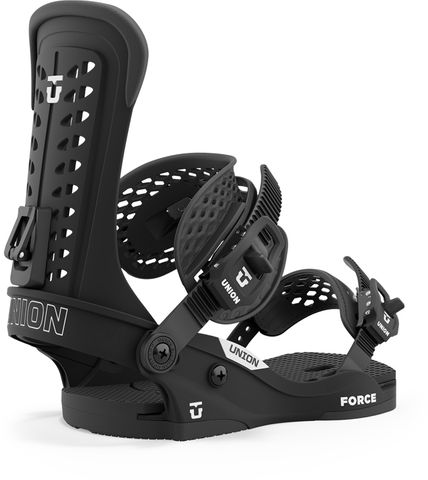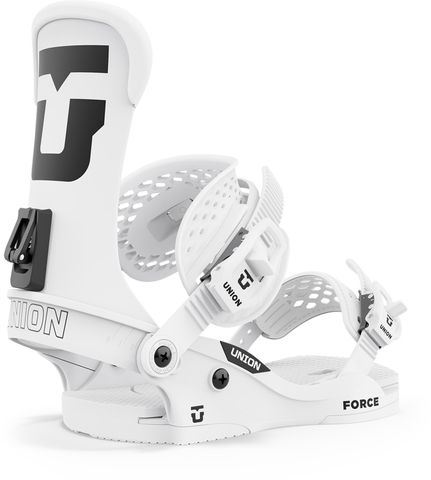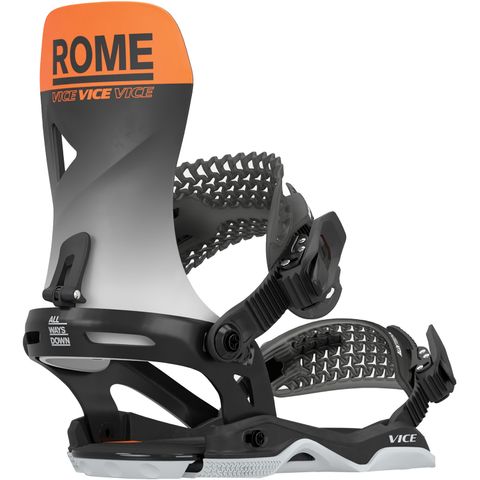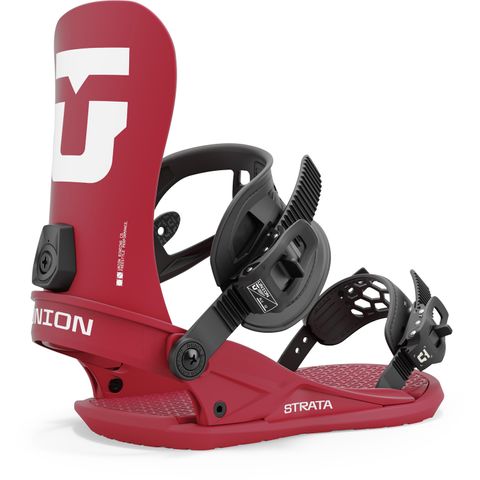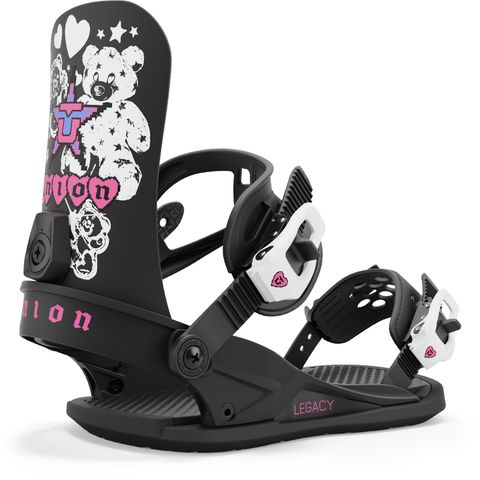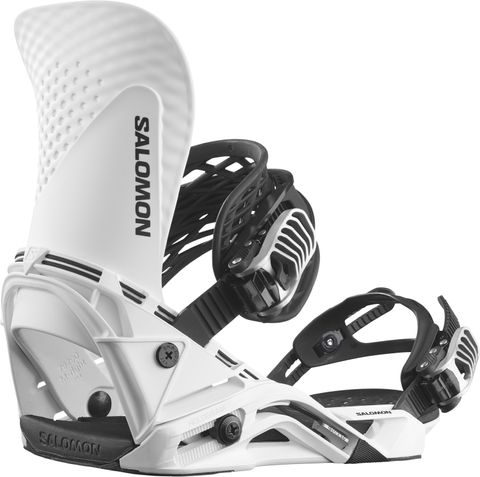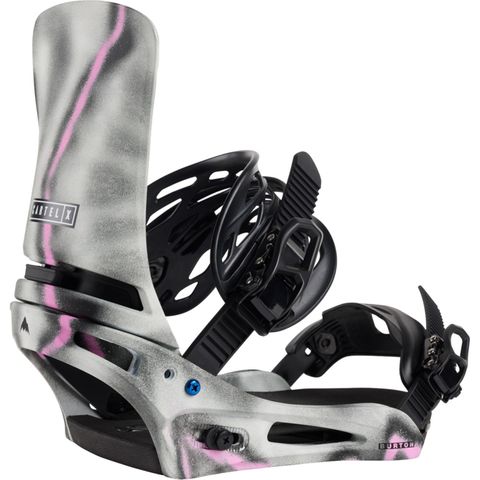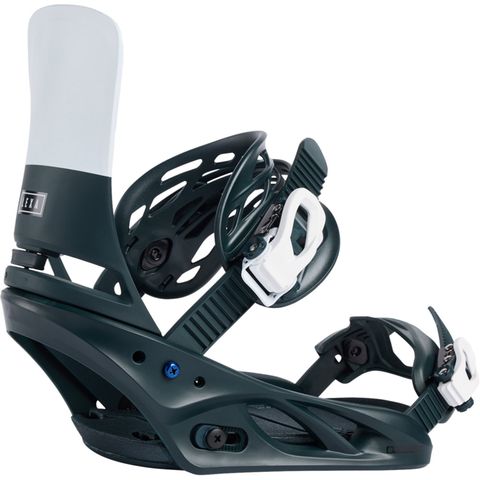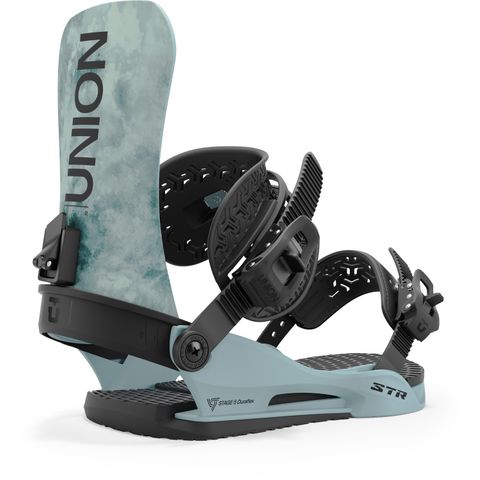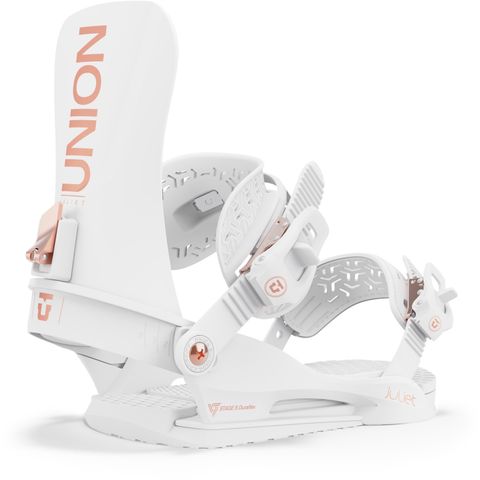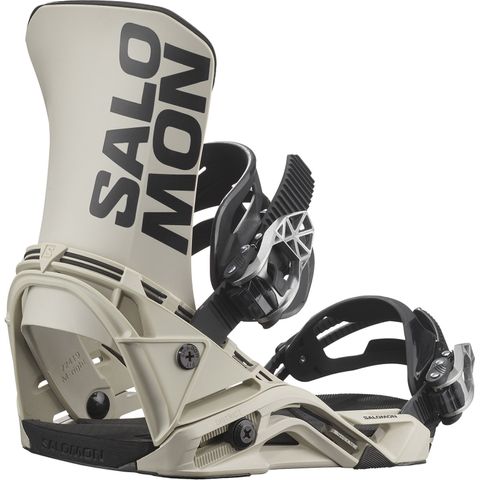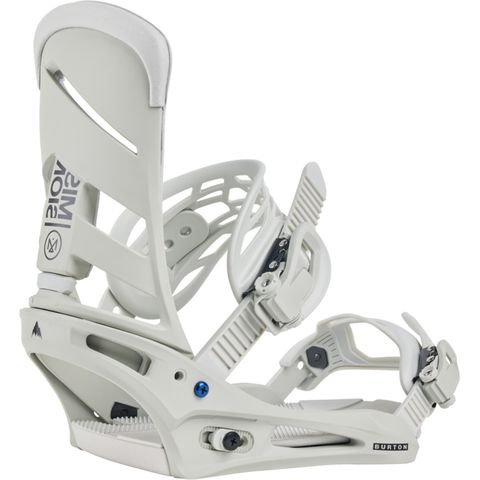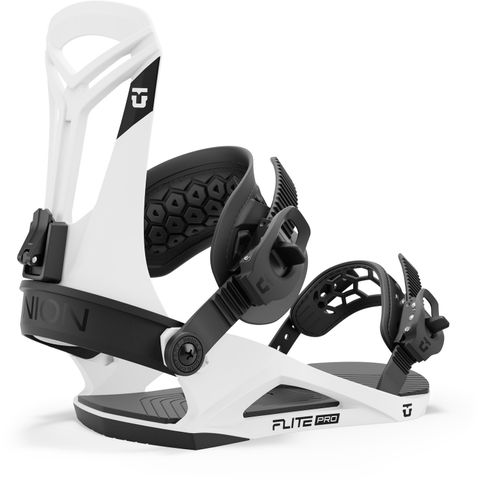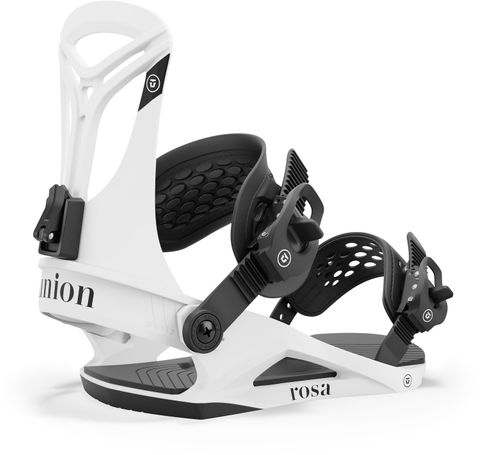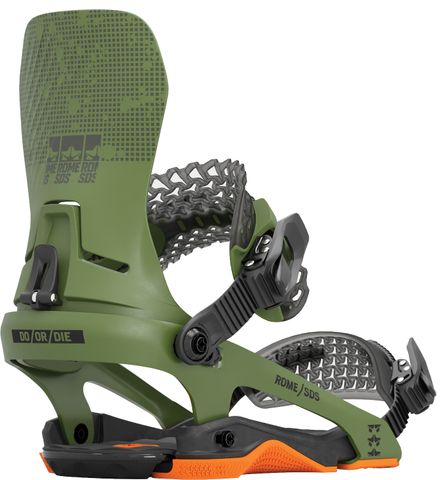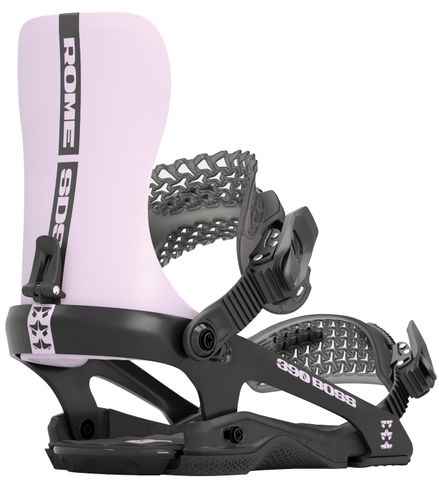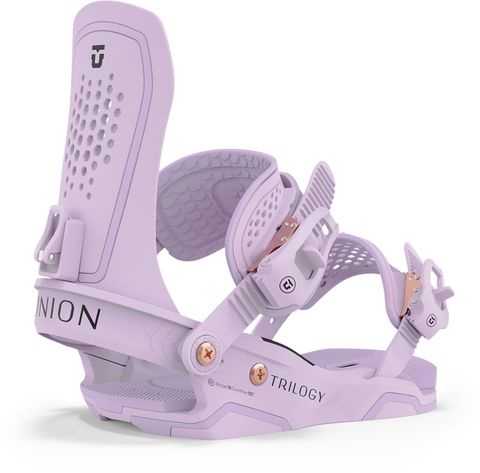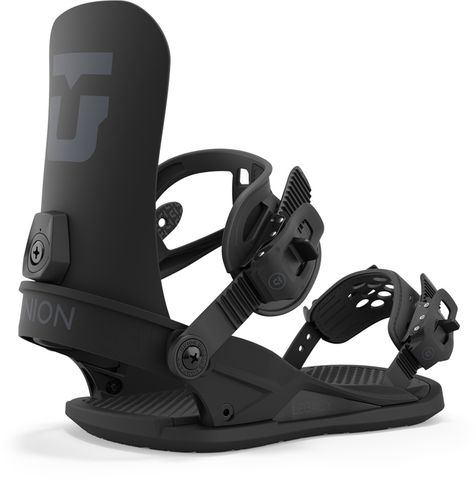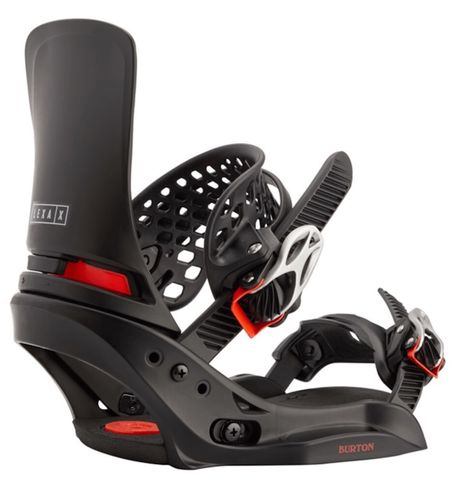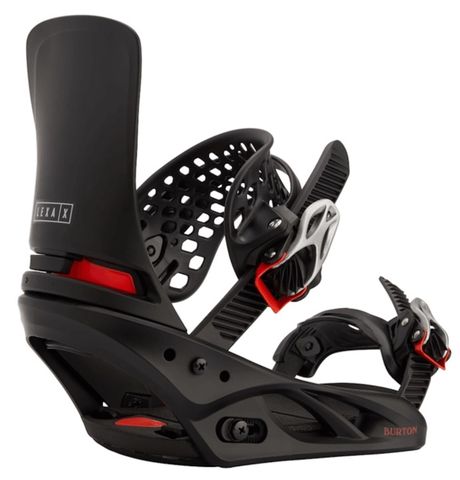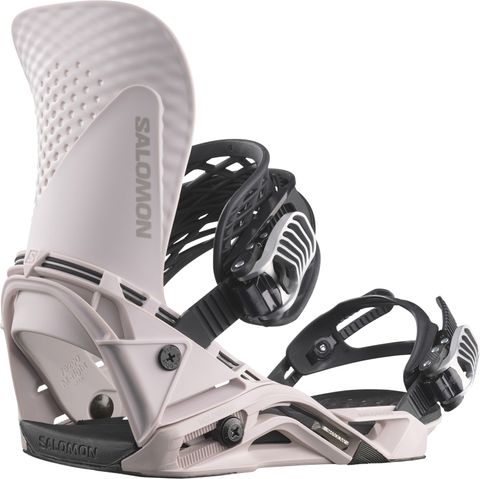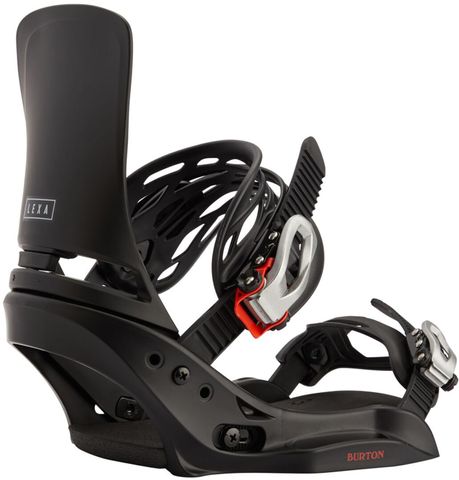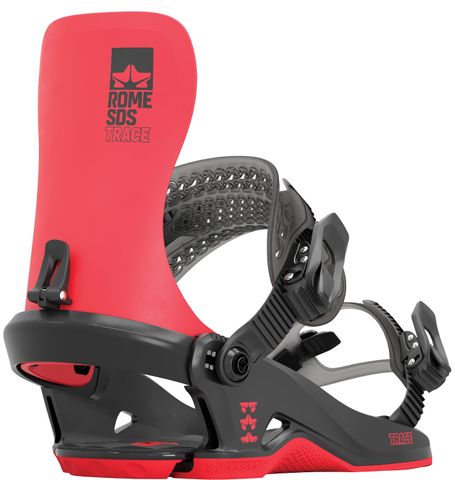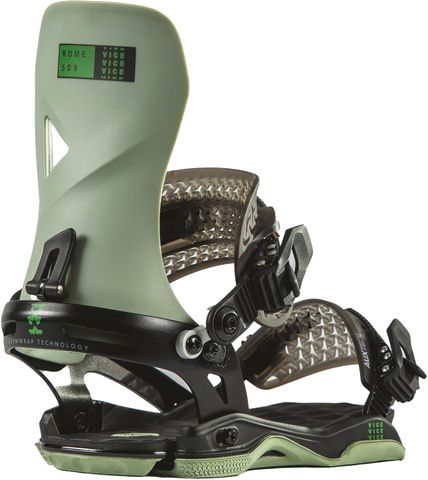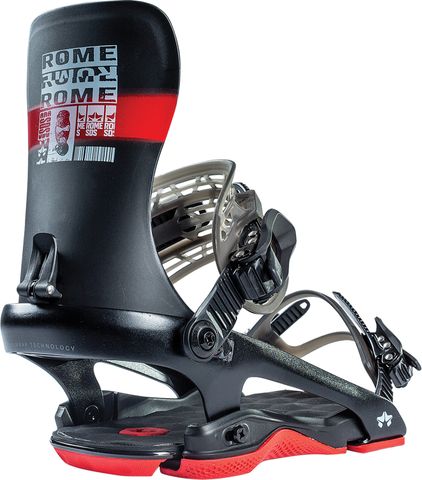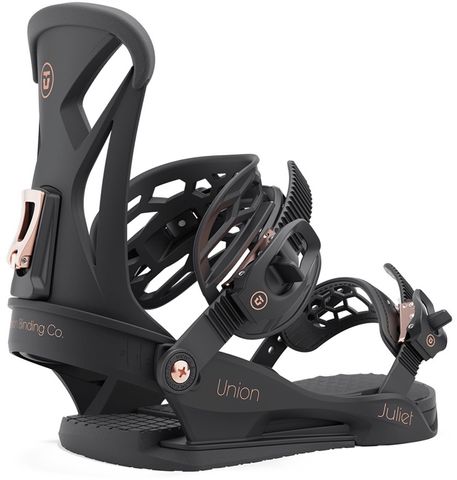Snowboard Bindings

Snowboard bindings are an essential component of a snowboard setup, as they provide the connection between your body and the board. Bindings come in a variety of styles and designs, but they all share the same basic components. The baseplate is the part of the binding that attaches to the snowboard, while the highback is the vertical support on the back of the binding that provides response. The lower strap is called a toe-strap while the upper strap is called a heel-strap or ankle-strap. Choosing the right bindings depends on your individual needs and preferences, as different styles and designs can affect your riding experience. Some factors to consider when choosing bindings include compatibility, flex, and size. It's important to choose bindings that fit well, provide the right amount of support and flexibility, and feel comfortable and secure.
- COMPATIBILITY: First and foremost, make sure the bindings you choose are compatible with your snowboard. Check the specifications of your board and look for bindings that fit its mounting pattern.
- 4X4: This is the most common mounting system used for snowboards, with four insert holes arranged in a square pattern on the snowboard. Nearly all bindings are compatible with this system.
- THE CHANNEL/EST: Developed by Burton, the bindings attach to a channel on the snowboard rather than individual insert holes. This system allows for more adjustability in stance width and angles. Nearly all binding manufactures are compatible with EST channel boards. Note: Burton EST specific bindings will not mount on 4x4 boards.
- FLEX: The flex of your bindings will affect your riding experience. Stiff bindings provide more response and control, while soft bindings offer flexibility and forgiveness. Consider your skill level and riding style when choosing the flex of your bindings.
- SIZE: Like snowboard boots, bindings come in different sizes. Make sure to choose bindings that fit your boot length as well as the shape of the boot itself. Some boots such as DC are wider in the heel and toe than others, making it more likely to need to size the binding up to match.
CONSTRUCTION & MATERIALS:
Snowboard bindings are typically made from a combination of materials, including plastics, metals, and composites. The specific materials used can vary depending on the brand and intended use of the bindings.
- PLASTIC: Most binding components are made from a durable plastic such as polycarbonate or nylon. These materials are lightweight, strong, and resistant to impact and wear. Short-glass can be blended with the plastic to provide strength and response. The higher the percentage of short-glass, the stiffer the material will become.
- ALUMINIUM: Like polycarbonate, aluminium can be used in snowboard binding heelcups because of its high strength-to-weight ratio. Brands such as Union and Rome use aluminium heelcups across most of their range.
- CARBON FIBRE: Carbon fibre is a popular material used in the construction of high-performance snowboard bindings. It is used because of it is lightweight, has high strength-to-weight ratio, is stiff and durable. Carbon fibre is often found in highbacks or baseplates.
- FOAM: Some baseplates have foam or other cushioning materials between them and the snowboard to help absorb shock and vibrations and improve overall comfort and performance.
- STRAPS: The straps that wrap around your boots and hold them in place can be made from a variety of materials, including synthetic materials like nylon or polyester, or natural materials like leather. The choice of material depends on factors like durability, flexibility, and comfort. These days, nylon is the most common choice for snowboard binding straps as it is strong, durable, and flexible.








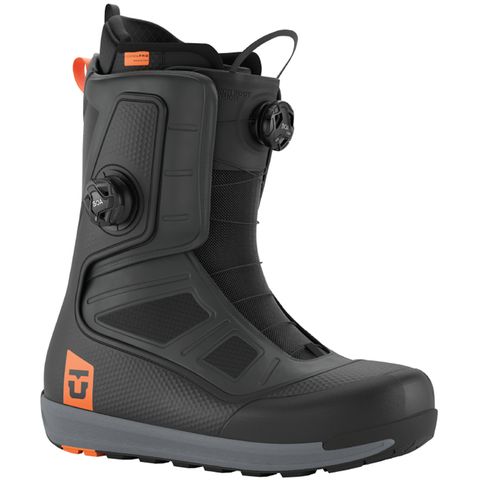


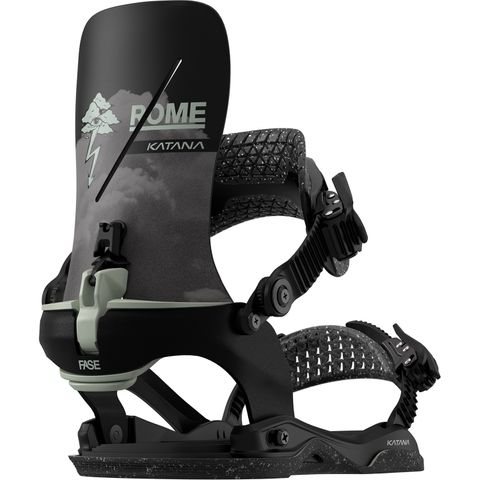




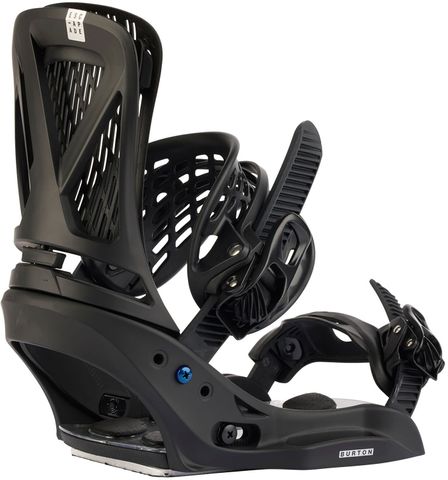



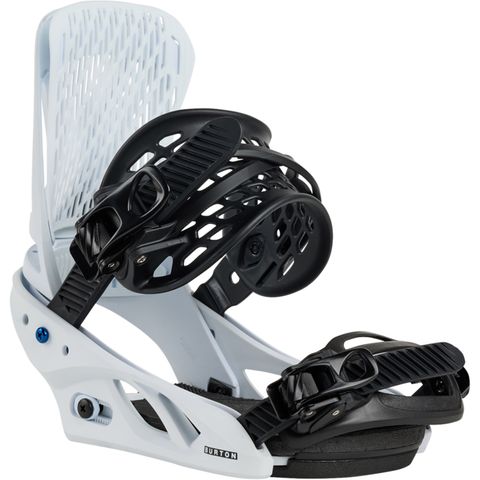


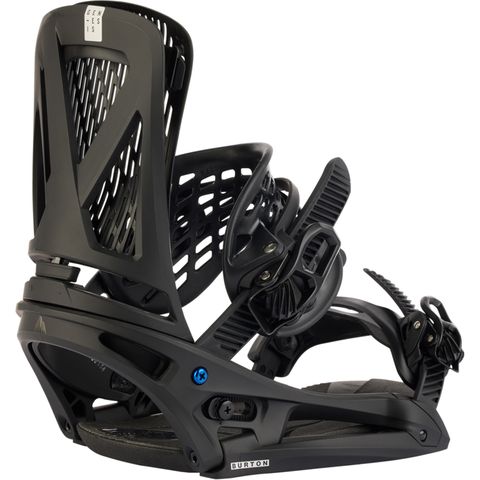











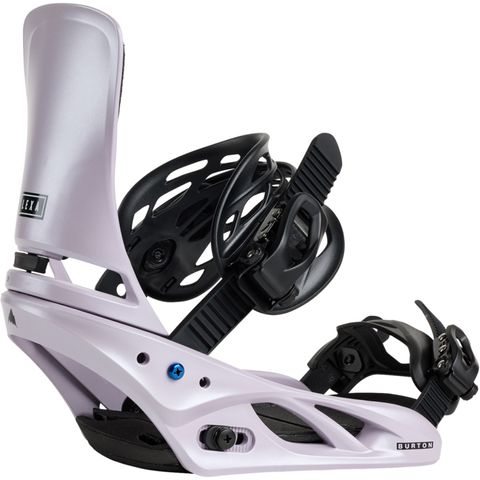


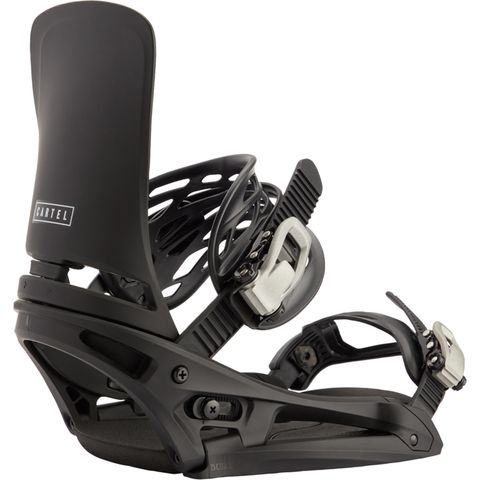
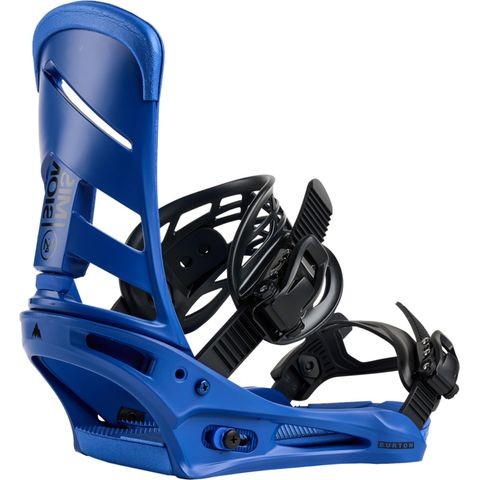



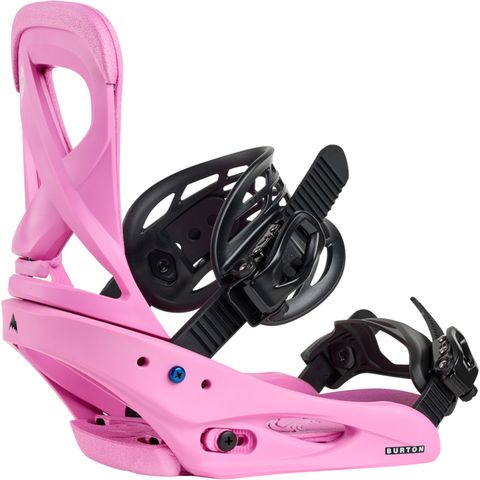


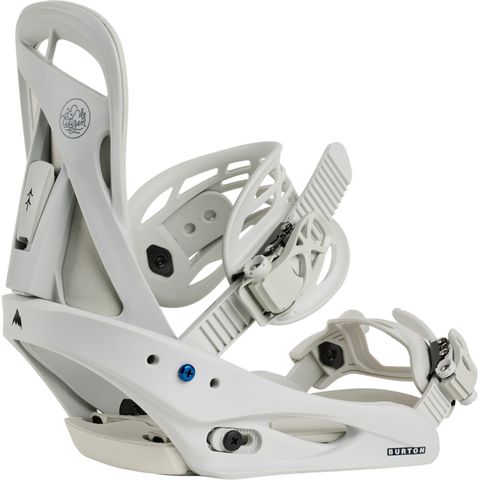



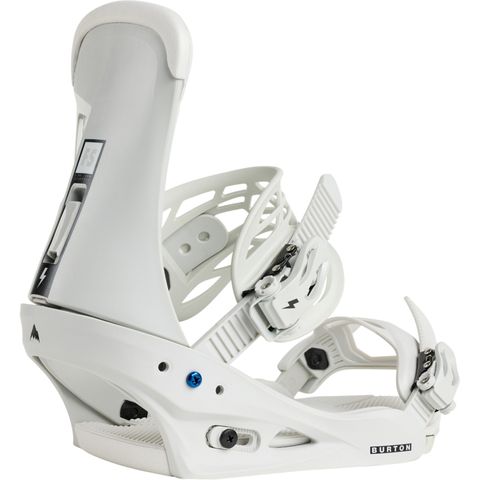




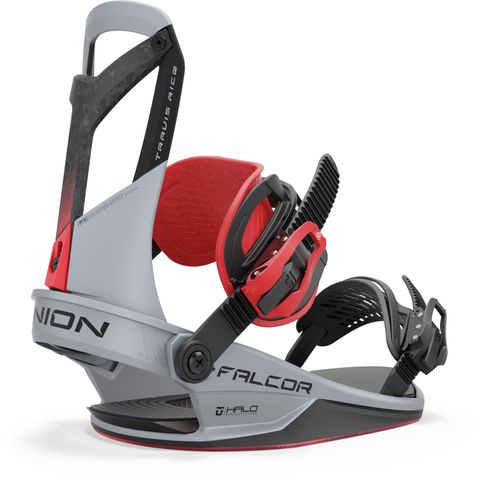


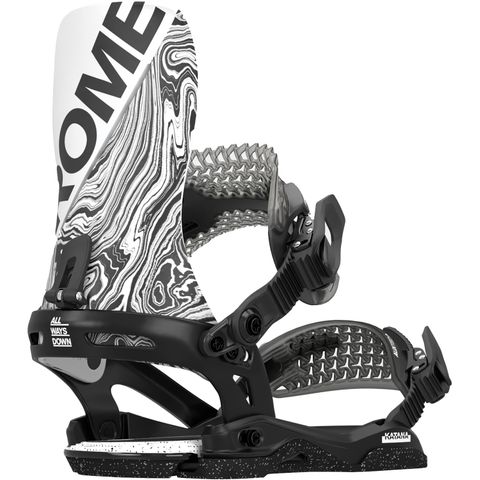


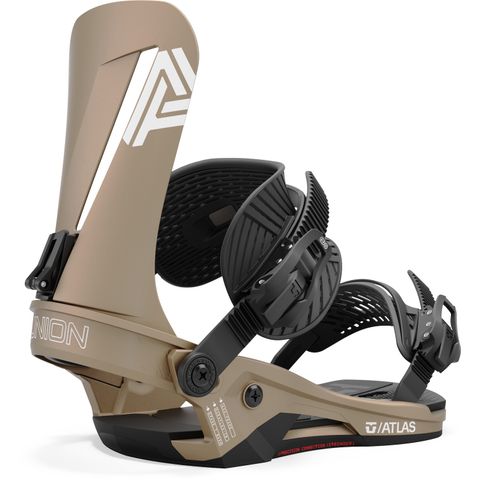


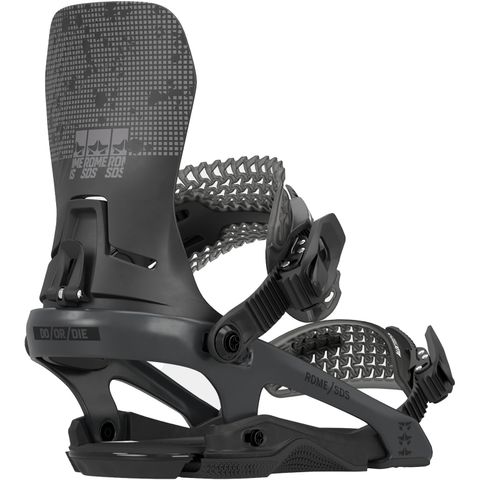
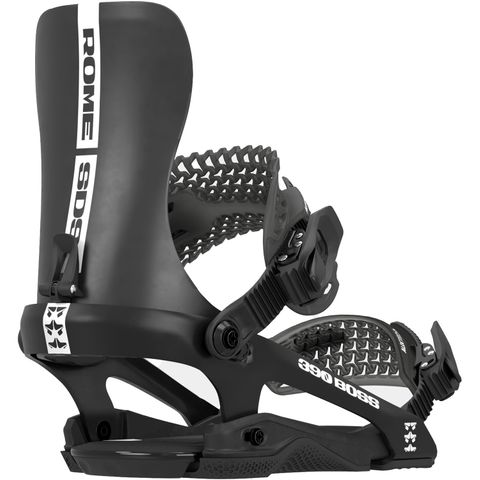




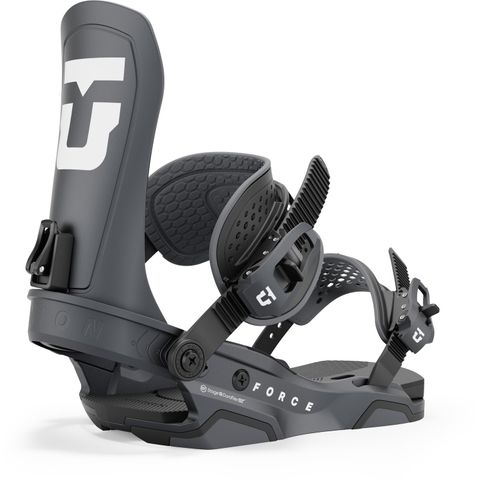



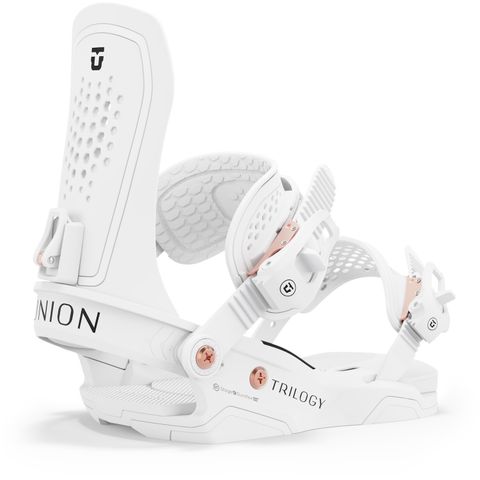


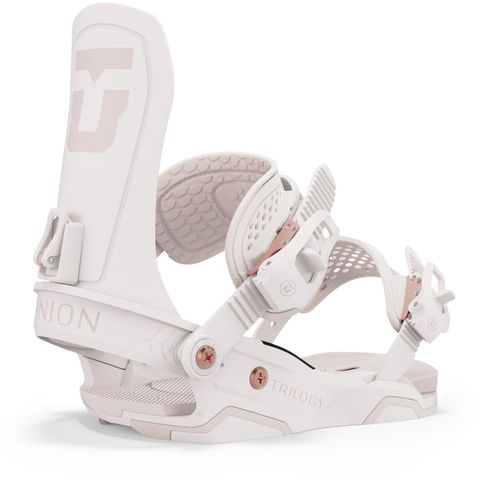


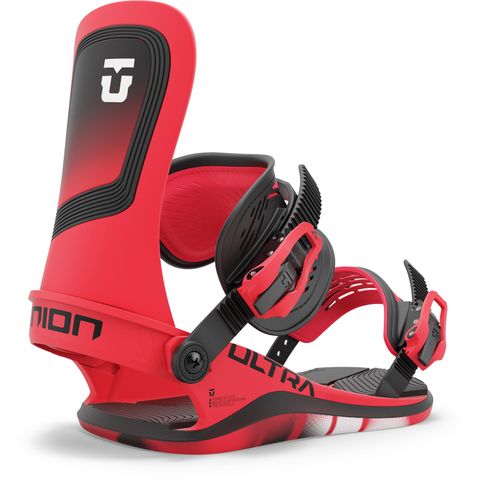



![Union 2025 Ultra [Womens] Snowboard Bindings Union 2025 Ultra [Womens] Snowboard Bindings](https://d1mv2b9v99cq0i.cloudfront.net/eyJidWNrZXQiOiJ3ZWItbmluamEtaW1hZ2VzIiwia2V5Ijoid3JvbmxpbmVcL2ltYWdlc1wvcHJvZGltZ1wvMjk3NDY4XzEuanBnIiwiZWRpdHMiOnsicmVzaXplIjp7IndpZHRoIjo0ODAsImhlaWdodCI6NDgwLCJmaXQiOiJpbnNpZGUiLCJ3aXRob3V0RW5sYXJnZW1lbnQiOnRydWV9fSwidmVyc2lvbiI6IjA2MTBmZDQyNmI0YTc3ODgwMTI3YzRiNGJmMTc4OWMxZmVjN2U0NjcifQ==)
![Union 2025 Ultra [Womens] Snowboard Bindings Union 2025 Ultra [Womens] Snowboard Bindings](https://d1mv2b9v99cq0i.cloudfront.net/eyJidWNrZXQiOiJ3ZWItbmluamEtaW1hZ2VzIiwia2V5Ijoid3JvbmxpbmVcL2ltYWdlc1wvcHJvZGltZ1wvMjk3NDY1XzEuanBnIiwiZWRpdHMiOnsicmVzaXplIjp7IndpZHRoIjoyNywiaGVpZ2h0IjoyNywiZml0IjoiaW5zaWRlIiwid2l0aG91dEVubGFyZ2VtZW50Ijp0cnVlfX0sInZlcnNpb24iOiIxZjQ5NzdkMGQ1ZGE4YjllZGE5NTdmODRmYzYzZTQ3ZmFmMjMwMzkzIn0=)
![Union 2025 Ultra [Womens] Snowboard Bindings Union 2025 Ultra [Womens] Snowboard Bindings](https://d1mv2b9v99cq0i.cloudfront.net/eyJidWNrZXQiOiJ3ZWItbmluamEtaW1hZ2VzIiwia2V5Ijoid3JvbmxpbmVcL2ltYWdlc1wvcHJvZGltZ1wvMjk3NDY2XzEuanBnIiwiZWRpdHMiOnsicmVzaXplIjp7IndpZHRoIjoyNywiaGVpZ2h0IjoyNywiZml0IjoiaW5zaWRlIiwid2l0aG91dEVubGFyZ2VtZW50Ijp0cnVlfX0sInZlcnNpb24iOiIwYjI2NDYyYzUxODgwMTI3YzdkNTFmOTA0YmRkOGMxNzBhOTA1NWNhIn0=)
![Union 2025 Ultra [Womens] Snowboard Bindings Union 2025 Ultra [Womens] Snowboard Bindings](https://d1mv2b9v99cq0i.cloudfront.net/eyJidWNrZXQiOiJ3ZWItbmluamEtaW1hZ2VzIiwia2V5Ijoid3JvbmxpbmVcL2ltYWdlc1wvcHJvZGltZ1wvMjk3NDY3XzEuanBnIiwiZWRpdHMiOnsicmVzaXplIjp7IndpZHRoIjoyNywiaGVpZ2h0IjoyNywiZml0IjoiaW5zaWRlIiwid2l0aG91dEVubGFyZ2VtZW50Ijp0cnVlfX0sInZlcnNpb24iOiI5N2FkZDQwZWRlMDlkYTYzZjdiZTc4YmRkODY4YzQxMDc3MjIxYmJlIn0=)
![Union 2025 Ultra [Womens] Snowboard Bindings Union 2025 Ultra [Womens] Snowboard Bindings](https://d1mv2b9v99cq0i.cloudfront.net/eyJidWNrZXQiOiJ3ZWItbmluamEtaW1hZ2VzIiwia2V5Ijoid3JvbmxpbmVcL2ltYWdlc1wvcHJvZGltZ1wvMjk3NDY4XzEuanBnIiwiZWRpdHMiOnsicmVzaXplIjp7IndpZHRoIjoyNywiaGVpZ2h0IjoyNywiZml0IjoiaW5zaWRlIiwid2l0aG91dEVubGFyZ2VtZW50Ijp0cnVlfX0sInZlcnNpb24iOiIwNjEwZmQ0MjZiNGE3Nzg4MDEyN2M0YjRiZjE3ODljMWZlYzdlNDY3In0=)
